Your eyes naturally see across a 200-degree horizontal field, but current VR headsets only deliver 90-120 degrees, creating a significant gap that affects immersion. You’ll experience ideal comfort when VR FOV stays between 90-110 degrees, though your peripheral vision extends much further. Your central vision within 60 degrees handles detailed recognition, while peripheral areas detect motion and spatial awareness. Understanding these biological limits helps developers design better VR experiences that work with your natural visual processing patterns.
The Science Behind Human Visual Perception
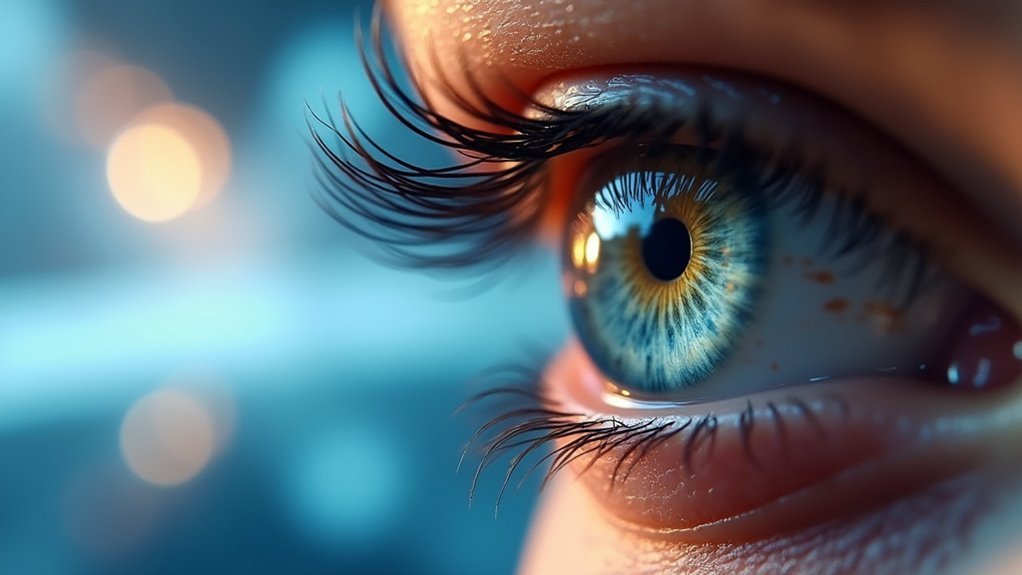
When you look around naturally, your eyes capture an impressive 200-degree horizontal and 135-degree vertical field of view, setting the benchmark that VR systems must meet to achieve true immersion.
Your central vision handles detailed object identification within a focused 60-degree area, while your peripheral vision extends awareness far beyond this zone. This Field of Vision design proves essential for thorough VR experiences that feel natural.
Your eyes process visual information at an astounding 576-megapixel equivalent resolution, demanding high-quality VR displays for realistic clarity.
When detecting changes in your peripheral vision, your eye movement typically precedes head rotation, creating natural reflexes that VR environments must accommodate.
Understanding these biological limitations helps developers create responsive, intuitive systems that align with your body’s instinctive visual processing patterns.
Measuring Human Field of View Parameters
Building on these biological foundations, measuring your individual field of view parameters reveals considerable variations that directly impact VR headset effectiveness.
Your visual system’s FOV measurements depend on several testable factors. Standard perimetry testing maps your complete visual field, measuring the maximum 200-degree horizontal and 135-degree vertical coverage. Your interpupillary distance affects binocular overlap, while each eye’s individual 160-degree contribution creates your combined FOV.
Standard perimetry testing reveals your complete visual field spans 200 degrees horizontally and 135 degrees vertically.
Central vision testing identifies your detailed recognition zone within the critical 60-degree area. Peripheral vision assessments detect motion sensitivity at FOV edges. Medical conditions like glaucoma can restrict these measurements considerably.
Understanding your personal FOV parameters helps optimize VR positioning, ensuring interface elements fall within your natural visual range rather than the limited 90-110 degree headset coverage.
Central Vision Vs Peripheral Vision Capabilities

Your visual system operates through two distinct mechanisms that process information differently across your field of view. Central vision covers approximately 30 degrees and delivers high-resolution detail recognition, enabling you to identify small objects and fine details in virtual environments.
Meanwhile, your peripheral vision extends up to 270 degrees horizontally and 170 degrees vertically, providing essential situational awareness and motion detection for immersive VR experiences.
You’ll find the clearest details within your central 60-degree area, while peripheral vision sensitivity decreases with age. Your eyes typically move before your head rotates when detecting peripheral changes.
Effective VR design should position critical elements within your central vision range while leveraging peripheral vision for enhanced spatial awareness and navigation.
How VR Displays Currently Compare to Natural Vision
Current VR headsets fall considerably short of matching your natural visual capabilities. While your eyes naturally perceive approximately 270 degrees horizontally and 170 degrees vertically, today’s VR technology severely restricts your field of vision.
Here’s how current VR displays compare to your natural vision:
- Horizontal FoV: VR headsets deliver only 90-120 degrees versus your natural 270 degrees
- Pixel density: Current technology achieves 21 ppd compared to the 60 ppd you need for true sharpness
- Vertical range: Most VR systems greatly limit your 170-degree vertical perception
- Peripheral awareness: Restricted FoV hampers your situational awareness capabilities
- Critical applications: Limited vision fields create safety concerns for driving simulations and training
These limitations directly impact your immersion and can hinder skill development requiring broad visual awareness.
Technical Limitations of VR FOV Technology
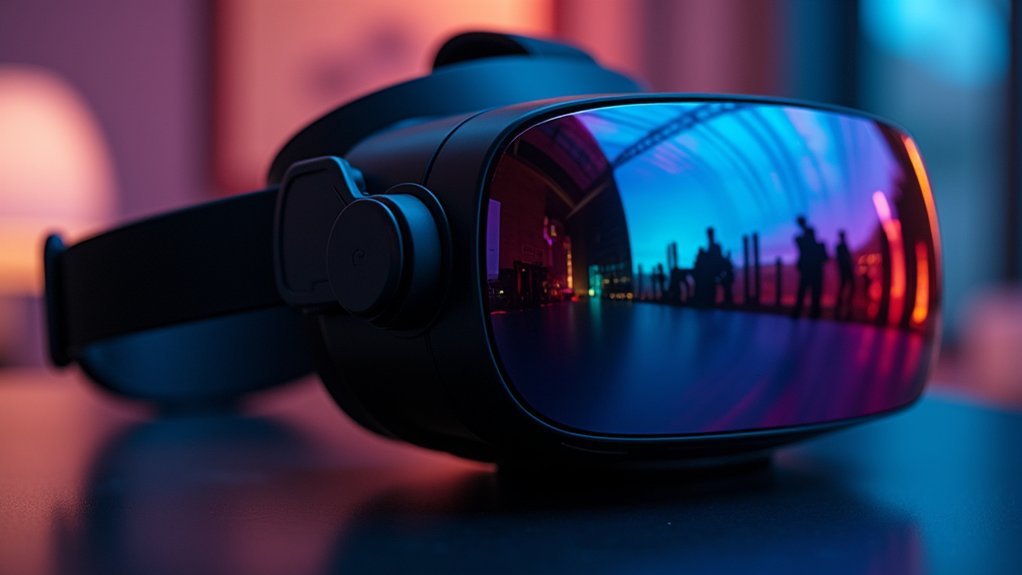
Several fundamental engineering barriers prevent VR manufacturers from delivering the expansive field of view your eyes naturally expect. Current headsets can’t match your natural 200-degree horizontal visual field because they’re constrained by optical limitations and processing demands.
| Challenge | Impact on FOV |
|---|---|
| Advanced optics requirements | Increases hardware complexity |
| Processing power limitations | Restricts rendering capabilities |
| Motion sickness concerns | Limits maximum safe FOV |
| Display technology constraints | Caps visual fidelity at 60 ppd |
When manufacturers push FOV beyond 120 degrees, they face significant technical hurdles. Your hardware must process exponentially more data, while sophisticated lenses become costly and bulky. These constraints force developers to balance immersion against comfort, leading many to implement adjustable FOV settings that accommodate individual tolerance levels.
The Impact of FOV Mismatch on User Experience
These engineering constraints create a fundamental disconnect between what your eyes expect and what VR technology delivers.
When you’re using current headsets with their 90-110 degree FOV against your natural 200-degree vision, you’ll experience several negative effects that directly impact your VR sessions:
- Tunnel vision sensation – You’ll feel like you’re looking through binoculars rather than experiencing natural sight
- Motion sickness and discomfort – The restricted view disrupts your spatial awareness, triggering nausea
- Reduced immersion levels – You can’t fully engage with virtual environments when peripheral vision is cut off
- Impaired skill development – Training applications become less effective for real-world activities like driving
- User fatigue – Your brain works harder to compensate for the FOV mismatch, causing exhaustion
Resolution Requirements for Natural Visual Fidelity
You’ll need your VR headset to deliver at least 60 pixels per degree to achieve visual fidelity that matches natural vision and prevents you from distinguishing between virtual and real objects.
Current high-end VR systems only reach around 21 ppd, creating a significant gap that limits immersive experiences.
This limitation becomes even more challenging when you consider that your retina processes 10 million bits of visual data per second, setting an incredibly high bar for VR technology to match human visual capabilities.
Pixels Per Degree Standards
A magnifying glass reveals individual newspaper dots that blur into smooth text from arm’s length—this same principle governs why VR headsets can’t yet match the crystal-clear sharpness of natural vision.
Your eyes need approximately 60 pixels per degree (ppd) to perceive visual content as truly realistic, but today’s VR headset technology delivers only about 21 ppd.
Current display limitations create noticeable gaps in visual fidelity:
- Standard VR delivers 21 ppd—significantly below natural vision requirements
- Emerging hypervision technology targets 40 ppd with 3.84K fast LCDs
- The 60 ppd threshold represents true visual indistinguishability from reality
- Current technology creates 39 ppd shortfall from ideal standards
- Achieving 60+ ppd could eliminate blurriness and revolutionize VR experiences
This resolution gap represents VR’s most critical development frontier.
Current Technology Limitations
Breaking down these pixel density barriers reveals deeper technological constraints that extend far beyond simple display specifications.
You’re confronting a fundamental gap where current VR technology maxes out at 21 ppd while your eyes demand 60 ppd for true visual fidelity.
Even cutting-edge 3.84K fast LCDs reaching 40 ppd can’t bridge this divide completely.
You’ll notice this limitation immediately through the persistent screen door effect that fragments your immersion.
The small VR screens amplify every pixel boundary, creating visible grids that constantly remind you you’re wearing a headset.
Your brain processes these visual artifacts as artificial, breaking the illusion that VR desperately needs to maintain.
Higher resolution displays aren’t just improvements—they’re essential stepping stones toward achieving the natural visual experience your perception system expects.
Individual Variations in Human Vision
Your unique facial structure and eye placement directly influence how much you can see horizontally, with wider-set eyes potentially giving you a broader field of view than someone with closer-set features.
As you age, your peripheral vision naturally weakens, effectively shrinking your visual awareness over time and impacting how you’d experience VR environments.
Medical conditions like glaucoma can drastically limit your field of vision, making it essential for VR designers to account for these individual differences when creating immersive experiences.
Eye Placement Affects FOV
How considerably does your unique facial anatomy impact what you can actually see in virtual reality? Your eye placement and facial structure directly determine your horizontal FOV capabilities, creating notable variations between individuals that VR developers must consider.
Your interpupillary distance plays an essential role in expanding your visual range:
- Wider-set eyes naturally provide broader horizontal FOV coverage
- Facial bone structure affects how close headsets sit to your eyes
- Deeper-set eyes may reduce your effective viewing angles
- Nose bridge height influences peripheral vision access
- Cheekbone prominence can block side vision in headsets
These anatomical differences mean you’ll experience VR differently than others.
While average humans see 270 degrees horizontally, your specific measurements could appreciably expand or limit this range, affecting your immersion and spatial awareness in virtual environments.
Age-Related Vision Decline
As you age, your peripheral vision naturally diminishes, creating significant challenges for VR designers who must accommodate these biological changes.
Your sharp vision becomes limited to a central 30-degree area, which directly impacts how you experience virtual environments. When you’re dealing with conditions like glaucoma, your field of view (FOV) becomes even more restricted, affecting motion detection and shape recognition.
VR developers must design interfaces that work within your narrower visual capabilities, ensuring immersion without causing overwhelming sensory experiences.
Your declining peripheral vision sensitivity means that traditional VR approaches mightn’t work effectively. Smart design considers these individual variations, creating user-friendly experiences that adapt to your changing visual needs rather than fighting against them.
Medical Conditions Impact
Beyond age-related changes, specific medical conditions create dramatic variations in how you perceive virtual environments, with some disorders reducing your field of view by up to 90%.
Medical conditions affecting your vision can severely impact VR experiences:
- Glaucoma restricts your peripheral vision, creating tunnel-like viewing that makes immersive environments feel claustrophobic.
- Retinal damage limits both central and edge vision clarity, reducing your ability to track VR objects effectively.
- Macular degeneration affects your central 30-degree sharp vision zone, making text and detailed interactions challenging.
- Diabetic retinopathy can cause irregular vision loss patterns, creating unpredictable blind spots in virtual spaces.
- Cataracts reduce overall visual clarity and contrast sensitivity, diminishing VR detail recognition.
These conditions require VR developers to take into account limited FoV adaptations and peripheral vision compensations when designing inclusive experiences.
Age-Related Changes in Visual Field Perception
While younger adults enjoy robust peripheral vision that spans nearly their entire visual field, your visual perception undergoes considerable changes as you age that directly impact how you’ll experience VR environments. Your effective field of view (FOV) narrows considerably, with peripheral sensitivity declining over time.
| Age Group | Effective Visual Field | Motion Detection |
|---|---|---|
| 20-30 years | Full peripheral range | Excellent edges |
| 40-60 years | Moderately reduced | Declining sensitivity |
| 65+ years | Considerably narrowed | Poor peripheral detection |
You’ll maintain sharp central vision within a 30-degree area, but clarity diminishes dramatically in peripheral regions. If you develop glaucoma—increasingly common with age—your visual field restricts further, making VR navigation challenging. Your ability to detect motion and shapes at visual field edges deteriorates, potentially affecting immersive experiences.
Optimizing VR FOV for Maximum Immersion
You’ll need to bridge the gap between your natural 270-degree horizontal vision and current VR headsets that max out around 120 degrees to achieve true immersion.
Your brain expects peripheral awareness that today’s technology can’t fully deliver, creating a fundamental mismatch between human capabilities and VR limitations.
You can maximize immersion by understanding how to work within these constraints while leveraging emerging strategies that push FOV boundaries closer to your natural visual experience.
Human Vision Capabilities
Although your eyes naturally perceive the world through an impressive 200-degree horizontal and 135-degree vertical field of vision, most VR headsets can’t match this expansive range.
Understanding your visual capabilities helps developers create better immersive experiences.
Your vision system operates through distinct zones that affect VR design:
- Central vision provides sharp detail within 60 degrees, where you’ll notice critical VR content most clearly.
- Peripheral vision detects motion and spatial awareness beyond the central zone.
- Resolution sensitivity reaches approximately 576 megapixels, demanding high-quality VR displays.
- Human FoV adaptation occurs more easily with reduced field angles than poor graphics quality.
- Optimal VR range between 90-110 degrees balances comfort with immersion.
High-end headsets exceeding 120 degrees greatly enhance your immersive experience by closely matching natural human FoV capabilities.
Current VR Limitations
Despite significant advances in VR technology, today’s headsets still struggle to deliver the field of view your eyes naturally expect. Most current devices offer only 90-120 degrees horizontally, falling well short of the 140-degree minimum needed for ideal immersion.
This limited FoV creates a troublesome “tunnel vision” effect that breaks immersion and can cause discomfort. You’re fundamentally looking through a window rather than experiencing true presence in virtual worlds.
| VR Headset Category | Typical FoV Range | User Experience Impact |
|---|---|---|
| Entry-level | 90-100 degrees | Noticeable tunnel vision |
| Mid-range | 100-110 degrees | Moderate immersion loss |
| High-end | 110-120 degrees | Improved spatial awareness |
| Premium models | 120+ degrees | Enhanced realism |
High-end models pushing beyond 120 degrees show promising improvements in spatial awareness and overall immersion quality.
Immersion Enhancement Strategies
Several key strategies can dramatically improve your VR experience by optimizing field of view settings and design choices.
When you’re designing or experiencing VR content, these FOV optimization techniques will maximize immersion:
- Target 130-degree overlapping FOV to match your natural vision capabilities and eliminate tunnel vision effects.
- Achieve 210-degree horizontal FOV on high-end headsets to align with your eye’s maximum 200-degree range.
- Maintain 170-degree vertical FOV for complete spatial awareness during navigation and interaction.
- Centralize critical elements within 60 degrees to reduce excessive head movement while engaging with interactive features.
- Enable natural head movements through wider FOV implementation, improving comfort and reducing motion fatigue.
You’ll notice that proper FOV calibration creates seamless immersion by supporting your body’s natural visual processing patterns.
Design Strategies for Limited FOV Hardware
When you’re designing VR experiences for hardware with limited field of view capabilities, your primary strategy must focus on maximizing the visual real estate within that constrained viewing area.
Position essential content within the central 60-degree zone to guarantee clarity and engagement. You’ll want to account for natural head rotation of approximately 30 degrees to each side when placing interactive elements, minimizing excessive movement that compromises user comfort.
Place vertical content around the horizon line, maintaining downward views of 40 degrees and upward views of 10 degrees for ideal visibility.
Implement adjustable FOV settings to accommodate individual preferences and visual perception variations. Conduct thorough user testing to gauge comfort levels and prevent motion sickness, as FOV adjustments greatly impact overall experience quality and immersion.
Future Technologies Bridging the Vision Gap
As VR technology advances toward the next generation of immersive experiences, breakthrough innovations are positioning themselves to eliminate the persistent gap between human visual capabilities and current hardware limitations.
You’ll soon witness revolutionary developments that fundamentally transform how VR systems deliver visual content to match your natural perception.
Future technologies targeting ideal FOV and visual fidelity include:
- Hypervision displays achieving 60 pixels per degree for life-like clarity
- Advanced optics expanding horizontal FOV to 200 degrees matching human vision
- Eye-tracking integration dynamically adapting content based on your visual focus
- Higher refresh rates with lower latency preventing motion sickness
- Enhanced AR overlays extending FOV beyond current 30-50 degree limitations
These innovations work together to create seamless visual experiences that honor your natural perceptual abilities.
Best Practices for FOV-Conscious VR Development
Creating successful VR experiences requires developers to understand and design around the fundamental limitations of human vision and current hardware capabilities.
You’ll achieve ideal immersion by ensuring your VR headset delivers at least 90-110 degrees FoV, bridging the gap between hardware constraints and natural human vision.
Position important content within users’ central 30-degree head rotation zone to minimize discomfort.
Place interactive elements between 1.25-5 meters distance for clear engagement without visual fatigue.
Design your UI around the central 60 degrees of vision for essential information, while using peripheral areas to enhance awareness without distraction.
Conduct thorough user testing to evaluate FoV impact on comfort and immersion.
Excessively narrow or wide views can trigger motion sickness, so finding the sweet spot is vital for user retention and experience quality.
Frequently Asked Questions
What’s a Good Fov for VR?
You’ll want a VR headset with 90-110 degrees FOV for good immersion. If you’re seeking premium experiences, look for models exceeding 120 degrees, but don’t go beyond human vision limits to avoid discomfort.
What Is the Fov of Human Vision?
Your horizontal field of view spans about 200 degrees, while your vertical vision covers roughly 135 degrees. You’ll see the sharpest details within your central 60-degree zone, with peripheral vision detecting motion and shapes.
How Many Pixels per Degree Is the Human Eye?
Your eye’s visual resolution reaches approximately 60 pixels per degree under normal conditions. This translates to about 576 megapixels total, setting the benchmark that VR displays must achieve for truly realistic experiences.
What Is the Normal Human POV?
Your normal field of view spans approximately 270 degrees horizontally and 170 degrees vertically. You’ll see clearest detail within 30 degrees centrally, while your peripheral vision detects motion across this wider range.


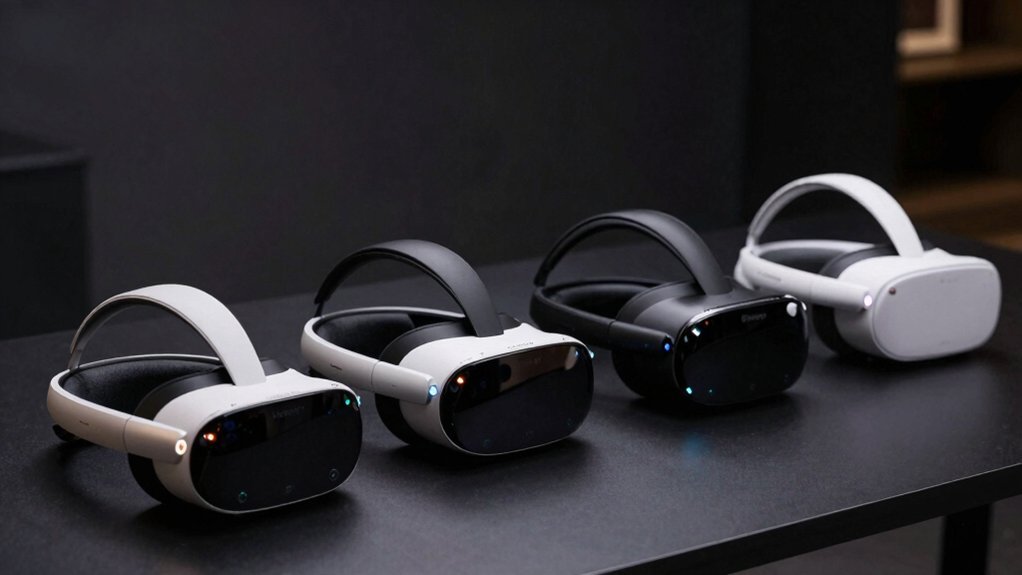
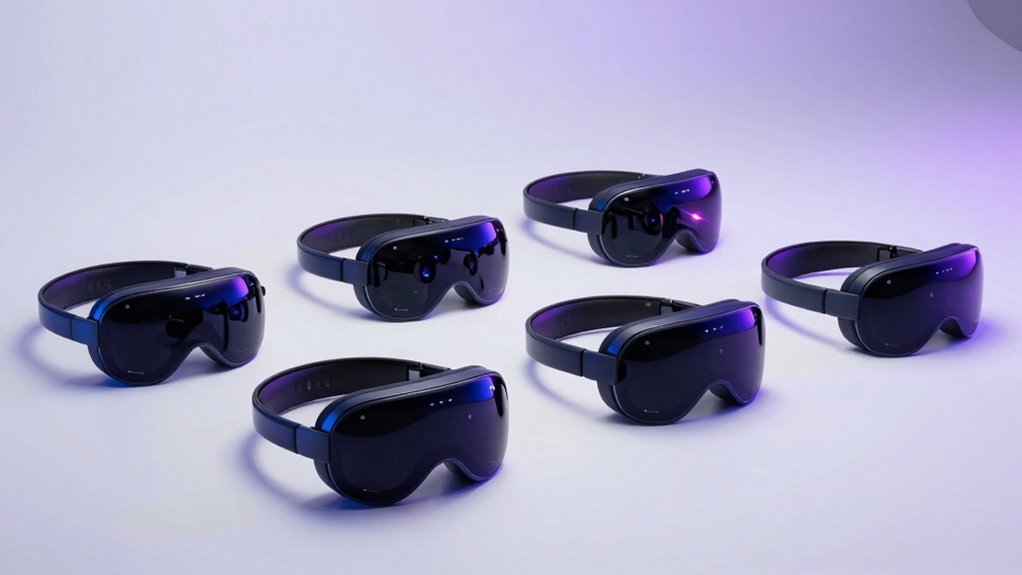
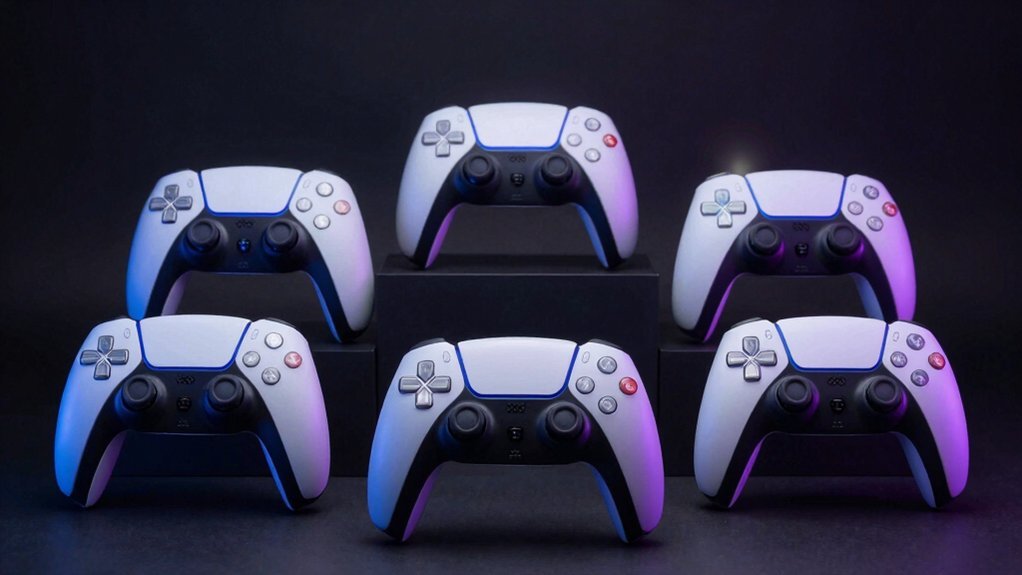
Leave a Reply